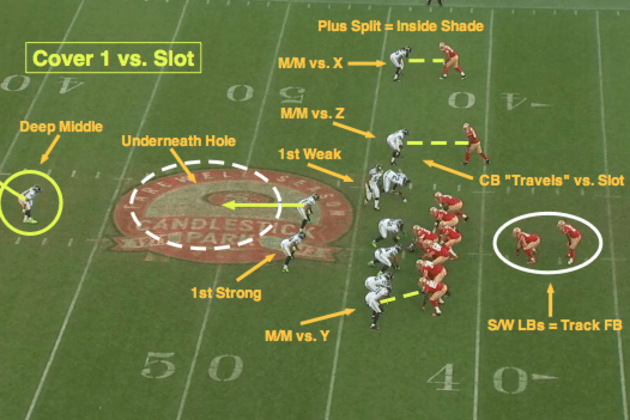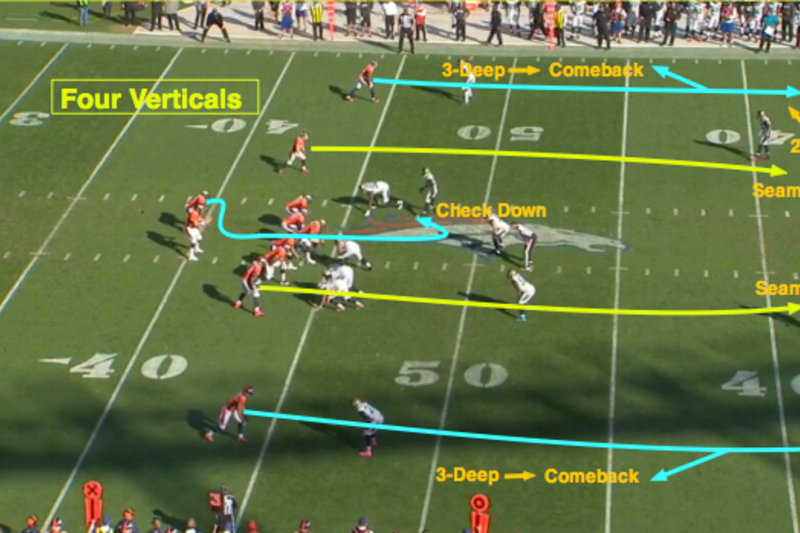In football, a cornerback defends against the opposing team’s wide receivers. They aim to stop passes and make tackles.
Football is a game of strategy and skill. Each player has a special role, and cornerbacks are no exception. Their job is crucial in preventing big plays by the offense. They line up against wide receivers and try to stop them from catching the ball.
They need speed, agility, and awareness to succeed. This position demands quick thinking and sharp reflexes. In this post, we’ll explore the important tasks of a cornerback. You’ll understand why they are key to a strong defense. Let’s dive into the world of cornerbacks in football.
Credit: en.wikipedia.org
Role Of A Cornerback
The role of a cornerback in football is crucial for a team’s defense. They are responsible for preventing the opposing team’s wide receivers from catching passes. Cornerbacks must be quick, agile, and have excellent awareness.
Defensive Position
A cornerback’s position on the field is primarily on the outer edges. They line up opposite the wide receivers. Their main job is to cover the receiver and prevent them from catching the ball. They need to be fast and have good jumping ability to contest catches.
Field Coverage
Field coverage is a key responsibility for a cornerback. They must cover their assigned area or player throughout the play. This involves tracking the receiver’s movements and anticipating their routes.
- Man-to-Man Coverage: This requires shadowing a specific receiver.
- Zone Coverage: Here, cornerbacks cover a specific area of the field.
Man-to-Man Coverage demands high athleticism. Zone Coverage requires strong communication with teammates.

Credit: bleacherreport.com
Key Responsibilities
In football, the cornerback is a crucial player on the defense team. They have several key responsibilities that are vital for the success of their team. This section will delve into the main duties of a cornerback.
Pass Defense
One of the primary tasks of a cornerback is defending against pass plays. They cover wide receivers and prevent them from catching the ball. This requires good speed, agility, and awareness. Here are some key actions in pass defense:
- Staying close to the receiver to disrupt their route.
- Reading the quarterback’s eyes to anticipate throws.
- Breaking up passes by swatting the ball away.
- Intercepting the ball to create turnovers.
Run Support
While pass defense is vital, a cornerback must also provide run support. This means helping to stop the running back. Effective run support involves:
- Quickly recognizing run plays.
- Shedding blocks from wide receivers.
- Making open-field tackles to stop the runner.
- Maintaining outside containment to force the runner inside.
Both pass defense and run support are essential. A successful cornerback must excel in both areas to contribute effectively to the team’s defense.
Essential Skills
A cornerback plays a crucial role in football defense. This player needs various skills to excel. These skills help them cover wide receivers, make tackles, and defend passes. Each skill is essential for success on the field. Let’s explore these key skills.
Speed And Agility
Speed is vital for a cornerback. They must keep up with fast wide receivers. A quick burst off the line is crucial. Agility allows them to change direction swiftly. This helps in sticking close to the receiver. Good footwork is part of agility. It aids in maintaining balance and control.
Tackling Ability
A cornerback must tackle effectively. They need to bring down the ball carrier. This skill prevents big plays. Proper tackling technique is essential. It reduces the risk of injury. A strong tackle can stop a touchdown. Good tackling also boosts the team’s defense.

Credit: www.youtube.com
Techniques And Strategies
Understanding the techniques and strategies that a cornerback uses is crucial to appreciating their role on the field. These players must master several skills to effectively defend against the opposing team’s offensive plays. Here, we will delve into two key strategies: Man-to-Man Coverage and Zone Coverage.
Man-to-man Coverage
In Man-to-Man Coverage, the cornerback’s job is to shadow a specific receiver. They must stay close and react quickly to the receiver’s moves. This technique requires agility, speed, and sharp instincts.
- Bump-and-Run Technique: The cornerback disrupts the receiver’s route with a quick shove.
- Mirror Technique: The cornerback mimics the receiver’s movements to stay in close proximity.
Man-to-Man coverage is intense. The cornerback must anticipate the receiver’s next move. One mistake can lead to a big play for the offense.
Zone Coverage
Zone Coverage requires the cornerback to cover a specific area of the field. They focus on the ball and any players entering their zone. This strategy is about positioning and awareness.
| Type | Description |
|---|---|
| Cover 2 | The cornerback covers the flat area near the sideline. |
| Cover 3 | The cornerback covers a deeper third of the field. |
Zone coverage helps to defend against multiple threats. The cornerback must communicate with teammates. They need to pass off receivers entering and leaving their zone.
Both techniques require discipline and practice. The cornerback must read the play and adapt quickly. Their skills are vital to a team’s defensive success.
Training Regimen
The training regimen of a cornerback is both intense and varied. A cornerback must be agile, strong, and quick. They need to keep up with fast wide receivers. Their training includes strength workouts, drills, and practice sessions.
Strength Training
Strength training is vital for a cornerback. They must build muscle to withstand physical contact. Here are some key exercises:
- Squats for leg strength
- Bench press for upper body power
- Deadlifts for overall muscle development
- Pull-ups for back and arm strength
These exercises help in building a strong physique. A strong body helps in tackling and blocking opponents.
Drills And Practice
Drills and practice sessions are crucial for skill development. Some of the common drills include:
- Backpedal drills to improve footwork and speed
- Coverage drills to enhance man-to-man defense
- Interception drills to practice catching skills
- Agility drills to improve quick direction changes
Practicing these drills regularly helps a cornerback stay sharp. It ensures they can react quickly during a game.
Combining strength training with drills creates a well-rounded cornerback. This preparation is key for success on the field.
Famous Cornerbacks
Cornerbacks are key players in football. They cover wide receivers and aim to prevent passes. Some cornerbacks have become famous for their skills and impact on the game. These players have left a lasting legacy in the world of football.
Historical Legends
Several cornerbacks in history are legendary. Deion Sanders, also known as “Prime Time,” is one of them. He played for multiple NFL teams and was famous for his speed and agility. Another legend is Rod Woodson. He played 17 seasons and was known for his versatility and intelligence on the field. Mel Blount is also a notable name. He played for the Pittsburgh Steelers and was known for his physical style and ability to shut down receivers.
Current Stars
Today’s NFL also has standout cornerbacks. Jalen Ramsey is one of the top names. He plays for the Los Angeles Rams and is known for his coverage skills. Stephon Gilmore is another star. He plays for the New England Patriots and has won Defensive Player of the Year. Tre’Davious White of the Buffalo Bills is also a top performer. He excels in both man-to-man and zone coverage.
Cornerback Challenges
Playing cornerback in football is not an easy task. It demands physical and mental toughness. Cornerbacks face unique challenges on and off the field. They need to be quick, smart, and resilient. Here, we discuss two main challenges: dealing with injuries and maintaining consistency.
Dealing With Injuries
Injuries are part of the game. For cornerbacks, they can be frequent and severe. They often face injuries to their knees, ankles, and hamstrings. These injuries can sideline a player for weeks. Recovery is tough and needs patience.
Cornerbacks need to stay in peak physical condition. They undergo rigorous training to strengthen their muscles and joints. Regular physiotherapy helps in faster recovery. They also focus on a balanced diet to maintain their health.
Below is a table that highlights common injuries and their recovery times:
| Injury | Recovery Time |
|---|---|
| Hamstring Strain | 2-4 weeks |
| ACL Tear | 6-9 months |
| High Ankle Sprain | 4-6 weeks |
Maintaining Consistency
Consistency is key for a cornerback’s success. They must perform well every game. This requires focus and dedication. They study their opponents’ moves and plan their strategies. Consistent practice helps them stay sharp.
Cornerbacks also need to maintain mental toughness. They face setbacks and need to stay positive. They train their minds to stay focused and calm under pressure. Watching game tapes and learning from mistakes is part of their routine.
Here are some tips for maintaining consistency:
- Regular practice and drills
- Studying opponents’ strategies
- Mental conditioning and relaxation techniques
- Balanced diet and proper rest
Cornerbacks face many challenges. With hard work and determination, they overcome these hurdles. They play a crucial role in their team’s defense.
Impact On Team Success
A cornerback in football covers wide receivers, prevents catches, and tackles opponents. Effective cornerbacks boost team defense and overall success.
The cornerback plays a key role in a football team’s success. This player covers wide receivers and prevents big plays. Good cornerbacks make the difference between winning and losing. They influence the entire defense.
Defensive Coordination
Cornerbacks need to coordinate with other defensive players. They work with safeties to cover deep passes. Communication is vital. A single mistake can lead to a touchdown. They also adjust to the offense’s formations. This helps the defense stay strong against different plays.
Game-changing Plays
Cornerbacks often make crucial plays. They intercept passes and stop the offense. These plays can shift the game’s momentum. A well-timed interception can lead to a score. They also tackle well to prevent extra yards. Their skills in coverage and tackling can stop big gains. These efforts keep the team in control.
Frequently Asked Questions
What Is A Cornerback’s Primary Role?
A cornerback’s primary role is to defend against passing plays. They cover wide receivers and prevent them from catching the ball.
How Do Cornerbacks Cover Wide Receivers?
Cornerbacks cover wide receivers by mirroring their movements. They use speed and agility to stay close and block passes.
What Skills Are Important For A Cornerback?
Key skills for a cornerback include speed, agility, and strong hand-eye coordination. They also need excellent awareness and tackling ability.
How Do Cornerbacks Contribute To Run Defense?
Cornerbacks contribute to run defense by tackling ball carriers. They often support linebackers and safeties in stopping runs.
Conclusion
A cornerback plays a crucial role in football defense. They cover wide receivers, prevent catches, and make tackles. Their agility and speed are vital. Great cornerbacks read plays quickly. They can change the game’s momentum. Understanding their duties helps appreciate their impact.
Watching cornerbacks can enhance your football knowledge. Their skills are unique and essential. Next time, pay close attention to their moves. You’ll see their importance.





